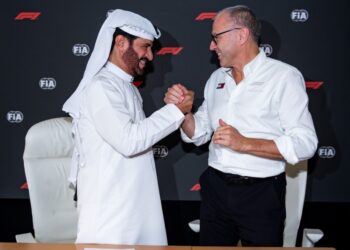The FIA’s Safety department has completed its investigation into the accident in the FIA F2 Championship race at Spa-Francorchamps on 31 August 2019, in which French driver Anthoine Hubert suffered fatal injuries and Juan Manuel Correa from the United States was seriously injured. The investigation included interviews with those involved, inspection of the physical evidence, analysis of available video material, as well as examination of the data from the team Data Logger and Accident Data Recorder. This investigative work has been peer-reviewed by the FIA Research Working Group, chaired by Professor Gérard Saillant. The findings were approved by the FIA Safety Commission, which is led by Commission President Sir Patrick Head, and presented to the World Motor Sport Council.
 The investigation focused on the four cars that were involved in the accident – #19 driven by Anthoine Hubert, #12 driven by Juan Manuel Correa, #20 driven by Frenchman Giuliano Alesi, and #21 driven by Switzerland’s Ralph Boschung. During the opening lap, an unrelated incident involving a slow-moving car caused a yellow flag at Turns 12 and 13 (Fagnes). The race leader began lap 2, at which point sector 1 was under a green flag.
The investigation focused on the four cars that were involved in the accident – #19 driven by Anthoine Hubert, #12 driven by Juan Manuel Correa, #20 driven by Frenchman Giuliano Alesi, and #21 driven by Switzerland’s Ralph Boschung. During the opening lap, an unrelated incident involving a slow-moving car caused a yellow flag at Turns 12 and 13 (Fagnes). The race leader began lap 2, at which point sector 1 was under a green flag.
The accident sequence, which lasted a total of 14.6 seconds, was initiated on lap 2 when Giuliano Alesi lost control of his car on the exit of Turn 3 (Eau Rouge), initially spinning and leaving the track on the left-hand side, before impacting the barrier rearwards 1.9 seconds after the loss of control and rebounding onto the track after Turn 4 (Raidillon). The investigation has highlighted a reasonable probability that a loss of internal pressure of the right rear tyre contributed to the loss of control of Giuliano Alesi’s car.
Following the impact of Giuliano Alesi’s car with the barrier, the debris from broken components was spread onto the race track. In an attempt to avoid Giuliano Alesi and the debris, Ralph Boschung and then Anthoine Hubert moved to the right, leaving the track and entering the run-off area of Turn 4. The reaction of Ralph Boschung and Anthoine Hubert to the accident of Car #20 started prior to the yellow flag being deployed, due to the proximity of these cars at the time of the incident. The yellow flag was deployed by the marshals at Post 5 (Turn 4) 1.8 seconds after the impact of Giuliano Alesi’s car with the barrier. During this manoeuvre, Ralph Boschung slowed more abruptly than Anthoine Hubert, who took action to avoid a collision by moving further to the right. Despite this move, Anthoine Hubert made contact with the back of Ralph Boschung’s car, losing his front wing and causing a right rear tyre puncture to Ralph Boschung ahead.
 Travelling at 262 km/h and with his front wing missing, Anthoine Hubert lost control and was set on a trajectory towards the barrier on the right-hand side of the Turn 4 exit run-off area, which he impacted at an angle of approximately 40 degrees at a speed of 216 km/h, generating a peak force equivalent to 33.7g. Following the impact and energy absorption by the barrier, the car was ejected and continued to travel in the racing direction while rotating, such that the left-hand side of the chassis was facing oncoming cars in the run-off area of Turn 4.
Travelling at 262 km/h and with his front wing missing, Anthoine Hubert lost control and was set on a trajectory towards the barrier on the right-hand side of the Turn 4 exit run-off area, which he impacted at an angle of approximately 40 degrees at a speed of 216 km/h, generating a peak force equivalent to 33.7g. Following the impact and energy absorption by the barrier, the car was ejected and continued to travel in the racing direction while rotating, such that the left-hand side of the chassis was facing oncoming cars in the run-off area of Turn 4.
 In the meantime, Juan Manuel Correa was approaching the scene of Giuliano Alesi’s accident. He was travelling approximately on the racing line, towards the right-hand side of the track on the exit of Turn 4 when he hit debris left behind from Giuliano Alesi’s car. The impact with the debris was approximately 1.5 seconds after the yellow flag had been deployed and it resulted in front-right suspension damage and the loss of the front wing, causing Juan Manuel Correa to lose control. His car veered to the right, off track and into the run-off area of Turn 4, setting him on a trajectory that would result in the car-to-car impact with Anthoine Hubert 1.6 seconds later. Juan Manuel Correa hit the left-hand side of Anthoine Hubert’s car at an approximate angle of 86 degrees and a speed of 218 km/h, while the car of Anthoine Hubert was virtually stationary. Car #12 (Juan Manuel Correa) and Car #19 (Anthoine Hubert) experienced a resultant peak force equivalent to 65.1g and 81.8g.
In the meantime, Juan Manuel Correa was approaching the scene of Giuliano Alesi’s accident. He was travelling approximately on the racing line, towards the right-hand side of the track on the exit of Turn 4 when he hit debris left behind from Giuliano Alesi’s car. The impact with the debris was approximately 1.5 seconds after the yellow flag had been deployed and it resulted in front-right suspension damage and the loss of the front wing, causing Juan Manuel Correa to lose control. His car veered to the right, off track and into the run-off area of Turn 4, setting him on a trajectory that would result in the car-to-car impact with Anthoine Hubert 1.6 seconds later. Juan Manuel Correa hit the left-hand side of Anthoine Hubert’s car at an approximate angle of 86 degrees and a speed of 218 km/h, while the car of Anthoine Hubert was virtually stationary. Car #12 (Juan Manuel Correa) and Car #19 (Anthoine Hubert) experienced a resultant peak force equivalent to 65.1g and 81.8g.
Following the car-to-car impact, Anthoine Hubert’s car was accelerated to 105.4 km/h and struck the barrier a second time before rebounding back towards the track. Double yellow flags were deployed 2.5 seconds after the car-to-car impact, followed by a red flag 2.7 seconds later as Car #19 (Anthoine Hubert) came to rest on track on its left-hand side, with Car #12 (Juan Manuel Correa) stopping in an inverted position on track 2.6 seconds later.
The medical and rescue response started 12 seconds after the initial loss of control of Car #20 (Giuliano Alesi), immediately after the double yellow flag was deployed and prior to Car #12 (Juan Manuel Correa) coming to rest. The first on site medical evaluation of Anthoine Hubert was conducted 54 seconds after the red flag. At 16 seconds after the deployment of the red flag, a fire started under Car #12 (Juan Manuel Correa) due to a fuel leak. The fire was extinguished by a marshal within 2 seconds and the first on site medical evaluation of Juan Manuel Correa was conducted 69 seconds after the red flag. The first extrication team arrived at the scene within 2 minutes of the accident occurring.
 In summary, the findings of the investigation are as follows:
In summary, the findings of the investigation are as follows:
• A chain of events resulted in a protracted and complex crash sequence involving four drivers, which ultimately led to a high-speed ‘T-Bone’ type impact between the cars of Juan Manuel Correa and Anthoine Hubert.
• The dynamics of the car-to-car impact in terms of speed and trajectory were such that an extremely high level of energy was transferred and dissipated, translating into non-survivable trauma to Anthoine Hubert and very serious injuries to Juan Manuel Correa.
• There was no single specific cause but multiple contributory factors giving rise to the severity of the accident were identified, following a detailed analysis of the various phases of the accident.
• The investigation found no evidence that any driver failed to react appropriately in response to the yellow flag signal or to the circumstances on track.
• The reaction of marshals and race control in deploying signaling and rescue services in relation to the accident is considered timely and good.
Safety improvement is a continuous process, therefore conclusions drawn from this accident and others like it from around the world will be integrated into the ongoing work of the FIA to further develop motor sport safety. In 2019 the FIA Safety department conducted investigations into 28 serious and fatal accidents related to circuit racing, supported by the ASN (National Sporting Authority) in each country.
Redazione MotoriNoLimits



















